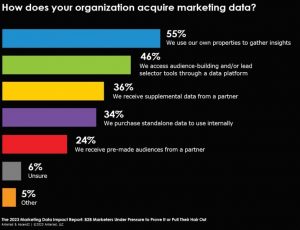If you’re looking to distinguish yourself in the business world, getting a Masters degree could be the best decision you make. It can lay the foundation upon which you can grow to become an executive, president, or even CEO. However, there are a lot of questions you must answer prior to making a final decision.
- How much does the degree cost?
- How long will it take?
- What pace will it go at?
Your answers to these questions will determine the type of Masters program you should go with – EMBA (Executive MBA) or traditional MBA.
Since an MBA and an EMBA program have many similarities, prospective applicants often find themselves wondering what is the difference between the two? This article (along with the accompanying infographic) breaks down both programs to help you identify which is best for you.
1. The Students
The average age of an EMBA student is between 32 and 38 years old. While most MBA students have only spent a few years in the corporate world, EMBA students tend to have at least a decade of experience under their belt.
If a prospective student already holds a supervisor or managerial position, they may find that they are more qualified for an EMBA program than an MBA. Since the professional network you gain while receiving an advanced degree is often an important factor in which type of program to pursue, higher-level executives find the stricter requirements of entering an EMBA program an attractive quality.
2. The Cost
While the cost of attending either program is comparable, what differs is the opportunity to be reimbursed for tuition by your employer. Since an EMBA program does not require that you quit your job, you may be eligible to receive partial or full reimbursement for tuition from the company you work for. Also, the average payback period for an EMBA degree is only 17 months.
Businesses view employees receiving advanced degrees as an investment in their successes as well, and therefore are willing to cover the costs. If your employer assists in paying for your degree, they may have you sign a contract ensuring that you will remain an employee for a set number of years after graduating.
3. The Pace
A full-time MBA is typically completed in two years, while an EMBA can similarly be finished in two to three. The reason why a student could complete an EMBA in the same amount of time as an MBA (while logging less class hours) is because an EMBA runs at a faster pace and has fewer prerequisites for graduation. You’ll learn more about the differences in curriculum below and why an EMBA is structured differently than an MBA.
4. The Curriculum
Designed to meet the needs of an executive level employee, an EMBA has a course load slightly different than that of an MBA program. Key differences are the absence of electives and removal of the “concentration” or “specialization” that is a component of many MBA curriculums.
Electives are usually present in an MBA program to help students familiarize themselves with all the sectors of business, even fields they do not foresee themselves working in. While this can help entry-level employees understand the bigger picture of how corporations function, it is usually not necessary for those at a higher level. Even though exploration can often lead to discovery of new passions, it is time consuming. For executive level employees already on a clear career path, omitting electives is the most effective way for them to earn their degree in a timely manner without compromising any core classes.
Another difference between an EMBA and MBA course load is that EMBA students are rarely required to choose a concentration. When this type of specialization is a part of the curriculum, students are forced to take additional classes to meet this requirement. An EMBA lifts this obligation for the lack of relevancy it has on executive level managers.
5. The Class Schedule
In accordance with the nine to five workweek that many of its students are tied to, EMBA programs have a flexible schedule that aims to not conflict with full-time jobholders. Classes are typically held in the evenings and weekends, with some programs requiring full Friday availability. While earning a degree while working full-time is a demanding feat, the EMBA class schedule caters to its student in the best way possible so that they can balance their responsibilities and achieve success in the workplace and the classroom.
(174)








